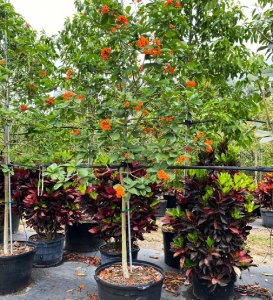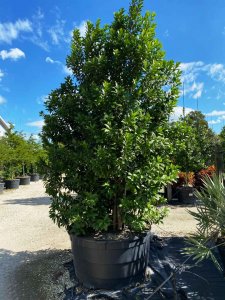In an urban landscape setting, island trees refer to an area of ground landscape with trees and other plants; mostly around roadways, sidewalks or patios. Trees grown in islands are somewhat similar to cultivating them in containers. But also differ, because this trees are at ground level, and vertical root growth is free, avoiding the underlying barrier of cement or other material.
Island landscaping areas vary in size and shape. The most common examples are as follows. A median strip between traffic lanes on a street or highway; which may be only a few feet in width, but a city block long or longer where there are no cross streets. Similar strips are often present between the street and sidewalk. A circular or triangular patch of ground at a street or road intersection. Islands to divide sections of a parking lot and to provide shade. Also, islands along streets occupy public property, those in parking lots may be public or private.
Island trees planting: key factors
The selection of trees for island planting along roadways must consider several key factors in addition to their aesthetic appeal. They should be trees which have a natural upright growth form, minimally spreading; be of small to medium size; preferably be evergreen; not generate large quantities of litter from leaves, flowers or fruits; be adaptable to necessary pruning; not have aggressive surface roots and be hardy and tolerant of vehicle air pollutants. In the case of trees or shrubs planted in a median island along a freeway, they may represent highway beautification and at the same time provide a screen between traffic going in opposite directions, particularly at night. Further consideration should be given to island trees will not grow tall enough to reach and interfere with utility lines and that spiny plants should not be used along pedestrian.
Island trees selected for planting along city streets have unique safety requirements. Major consideration must be given to the line of sight of a vehicle driver. The tree or shrub crowns must be either below or above the line of sight such that a driver can see merging traffic, pedestrians and not obscure road signage at intersections.
In parking lots, driver line of sight is also important, and the density of tree and shrub planting should not be so dense as to pose a personal security threat to cars or individuals using the lot.
Because trees on islands are surrounded by hard surfaces, the soil may require irrigation to support trees, shrubs and other plants. Sprinkler or drip irrigation systems are important to deliver both water and liquid forms of fertilizer. Although, watering trucks are also as an alternative to an irrigation system.
What trees grow on islands? Top 9 types of tress on islands


Nine trees that grow on islands, from among the more than 200 species in the TreeWorld inventory, are as follows:



